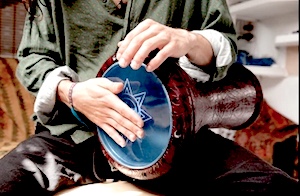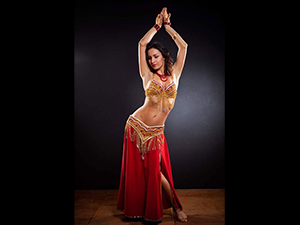
Harem Dance
Dancing for the Sultan
“Dancing with the veil feels holy, powerful, graceful, and feminine.”
― Rosangel Perez“Music does not need language of words for it has movements of dance to do its translation.”
― Shah Asad Rizvi
About the Music
As first mentioned in my Nature Suite Delicates piece, my Casio PX-S3000 digital piano has turned into of treasury chest of learning about a variety of lesser known instruments from around the world. The patch bank called "Other" has a huge assortment of ethnic instrument sounds. This tune focuses on Arabic/Turkish instruments: the oud, the kanun, the zurna and the darbuka.
Imagine a curvaceous ornately decorated belly dancer slithering to this music!
About the Instruments you are hearing...
Oud
The oud is a short-neck lute-type, pear-shaped, fretless stringed instrument usually with 11 strings but some models have 10 or 13 strings. Many current Arab players use this tuning: C2 F2 A2 D3 G3 C4 on the standard tuning instruments, and some use a higher pitch tuning, F A D G C F. Modern out players generally pluck the string with a nail file shaped plecturm called a risha in Arabic, mızrap in Turkish.
The oud is very similar to other types of Western lutes. The oud, as The fundamental difference of the oud compared to the western lute, is that it has no frets and a smaller neck. Similar instruments have been used in the Middle East, North Africa and Central Asia for thousands of years.
Modern-day ouds fall into three categories: Arabian, Turkish, and Persian, the latter also being known as barbat. Arabian ouds are normally larger than their Turkish and Persian counterparts, producing a fuller, deeper sound, whereas the sound of the Turkish oud is more taut and shrill, and usually (and partly) tuned one whole step higher than the Arabian.
Source/Further Details »
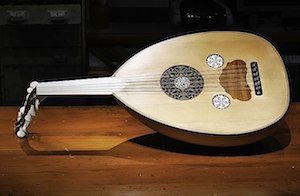
Qanun (Kanun)
The qanun or kanun is an Arabic string instrument played either solo, or more often as part of an ensemble, in much of the Middle East, North Africa, West Africa, Central Asia, and Greece. Similar to a zither, it is famous for its unique melodramatic sound. The qanun was introduced to Europe by the 12th Century, becoming known during the 14th to the 16th Century as a psaltery or zither.
The qanun is played by plucking the strings with two tortoise-shell picks (one for each hand) or with fingernails. It is played on the lap while sitting or squatting (or sometimes on trestle-like support) It has a standard range of three and a half octaves.
The instrument also features special metallic levers or latches under each course called mandals. These small levers, which can be raised or lowered quickly by the performer while the instrument is being played, serve to slightly change the pitch of a particular course by altering effective string lengths.
Source/Further Details »
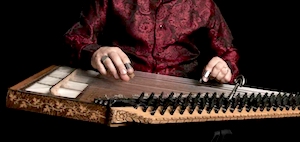
Zurna
The zurna sounds a bit like the oboe. It requires high pressure to give it sound and when it does, it is almost constantly loud, high pitched, sharp, and piercing. It has even holes on the front, and one thumb hole and a range of over one octave, Zurnas are used in the folk music of many countries, especially in the Middle East, Greece and North Africa.
Source/Further Details »
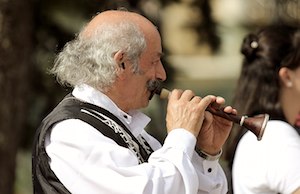
Darbuka
Interestingly, the darbuka is part of a large family of drums known as goblet drums. Goblet drums include the African djembe, the Turkish doumbek and the Iranian tombak. The Darbuka is Egyptian and is played on the lap while resting on the player's leg, the Turkish doumbek is generally smaller and held up higher under one's arm. Djembes are larger and usually rest slightly diagonal on the ground, nestled between a player's legs
Egyptian Darbuka are commonly adorned with beautiful ornate colorful designs differentiating them from almost any other musical instrument. Various materials are used to create these fantastic designs, including paints, glosses, Mother of Pearl gemstones and coloured metals, plastics and stones.
Source/Further Details »
